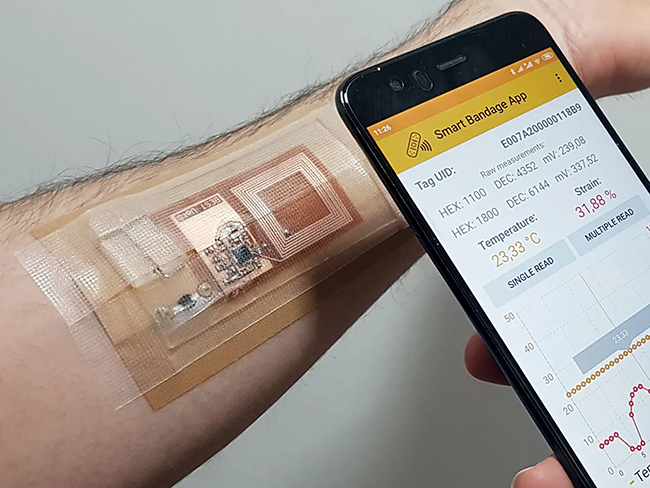Smart bandage provides data on healing wounds
03-11-2021 | By Sam Brown
Recently, researchers from the University of Glasgow developed a new type of bandage that can determine how well a wound is healing and transmit this information to an app. What challenges do bandages face, what did the researchers develop, and are such dressings practical?
Why bandages can be a double-edged sword?
Bandages are most likely one of the oldest pieces of medical equipment known to man; they effectively stop bleeds, apply pressure, and prevent wounds from getting soiled. However, like any piece of equipment, bandages must be used correctly; otherwise, they can do more harm than good.
For example, it is essential that bandages are sterile to not cause further infection of wounds being protected. Bandages must also be applied with the right amount of pressure to ensure that healing takes place as fast as possible. The use of ointments can further encourage healing, and such ointments can be applied to a bandage.
However, one major challenge faced by bandages is the need to inspect wounds under bandages. It is essential that doctors can monitor wounds being covered by bandages to ensure that they are healing correctly and that there are no further complications. But, removing a bandage can introduce contaminates into a wound if not done correctly and can also interrupt the healing process.
From personal experience (and most likely from all readers), bandages can also become bonded to a wound, and trying to remove them not only reopens healing wounds but also causes extreme amounts of pain in the removal process.
Researchers develop flexible bandage monitor
Recently, researchers from the University of Glasgow published a paper regarding a new smart bandage that they have developed measuring 6cm x 3cm. The smart bandage combines flexible PCB technology with strain gauges and sensors to create a device that is attached to the topside of a bandage. From there, the use of NFC allows for the smart bandage to communicate with smartphones to display information on readings gathered.
So far, the smart bandage obtains only strain and temperature, but these two readings are essential to know when applying bandages and the wound condition underneath. As previously stated, bandages need to be applied with a specific amount of pressure, and the strain gauge can help doctors determine if the bandage has been fitted correctly.
However, the temperature reading gives doctors insights into the condition of the wound and how well it is healing. Studies have shown that the best temperature for a wound to heal is between 36°C and 38°C, and therefore the smart bandage would be able to ensure that this temperature range is being met. Furthermore, infected wounds often rise in temperature (as the body attempts to fight the infection), and this would be detectable by the smart bandage.

Are smart bandages practical?
The technology used by the researchers is off-the-shelf mainly, and the use of NFC means that the smart bandage does not require a power source. As such, the smart bandage demonstrated that it could prove to be an essential tool both in hospitals patients after surgery and after-care.
While the researchers pointed out that their technology can now be tested for use outside of the lab, the simplicity of the design combined with the potential reward makes the device a no-brainer. It will very likely become commonplace by the end of the decade. As electronics continue to reduce in cost while technology improves, even the most basic forms of treatment and care will become smart.
